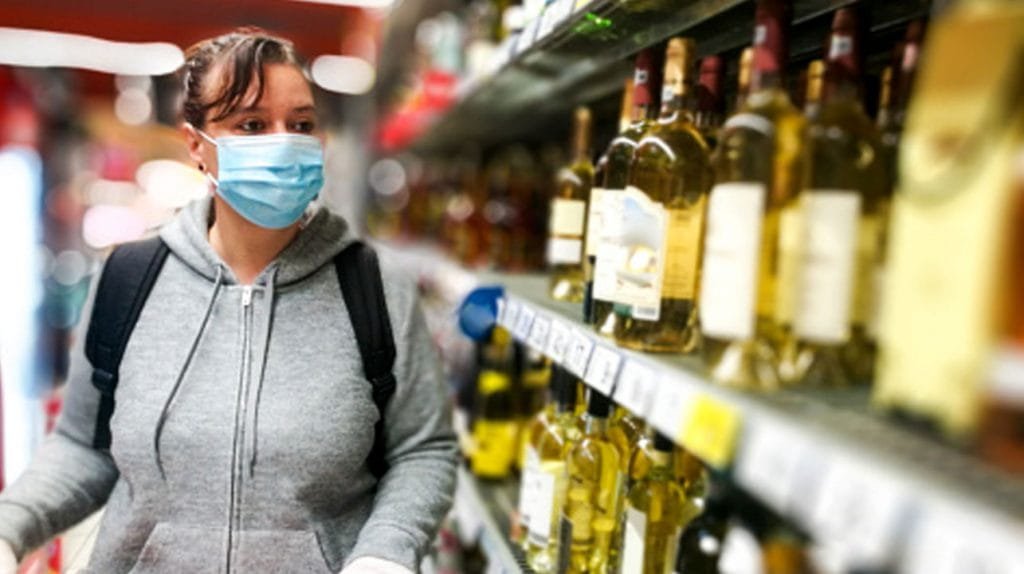Harmful alcohol use is one of the world’s leading causes of illness, disability, and death. It is linked to over 200 diseases and injuries, resulting in 3.3 million deaths globally each year.1
Excessive alcohol consumption can lead to alcohol use disorders. Alcohol use disorder (AUD) — also known as alcoholism, alcohol abuse, and alcohol addiction — is a type of substance abuse.
It can damage your health, relationships, and well-being over time unless treated. Learning to prevent alcoholism can help you avoid consequences and reduce its impact on your life.
Before you take steps in alcohol prevention, you need to examine your current alcohol use. This will help you find out whether or not you have an alcohol problem.
Assessing Your Drinking Levels — How to Tell if You Drink Too Much
Take note of how many drinks you typically consume and how often you drink in a day, week, and month. If you drink excessively, then you may have an alcohol problem. These include:
Binge drinking — women who have 4 or more drinks or men who have 5 or more drinks in 2 hours.
High-intensity drinking — alcohol consumption that is 2 or more times than binge drinking levels.
Heavy drinking — women who have 3 or more drinks a day or at least 8 drinks per week or men who have 4 or more drinks a day or at least 15 drinks per week.
Heavy drinking, high-intensity drinking, and binge drinking are signs that you drink too much alcohol. Any type of alcohol use in pregnant women and adolescents below 21 is also considered excessive.4,5
How Can You Prevent Alcohol Abuse?
Drinking patterns vary depending on age, gender, culture, environment, and background. People’s behavior and attitude towards alcohol also change over time.
Since alcohol use varies and produces different effects on everyone, there is no single effective way to prevent alcoholism. Knowing how alcohol affects a person will help you determine which steps you can take.
Tips for Preventing Alcohol Abuse & Addiction in Adults
If you are struggling with alcohol, the following tips will help you create healthy drinking habits and prevent alcohol use disorder.
Drink moderately — or practice low-risk drinking
The Dietary Guidelines for Americans recommend non-drinkers to abstain from alcohol completely. But for drinkers and people who want to start drinking, you can limit your alcohol consumption to 1 drink per day (in women) and 2 drinks per day (in men).8
Those who regularly consume alcohol may also practice low-risk drinking. This means limiting your intake to 3 drinks per day or 7 drinks per week (in women) and 4 drinks per day or 14 drinks per week (in men).
According to the National Institute on Alcohol Abuse and Alcoholism (NIAAA), only 2 out of 100 people who drink within these limits develop alcohol use disorders.4
Be mindful of your alcohol consumption
Monitor your alcohol intake. Whether you are drinking alone or with the company of others, make sure that you drink within the recommended limits.
One way to do this is to alternate drinking with other activities. For instance, you can eat, talk with people, and drink non-alcoholic beverages like juice or soda.
Before you grab a drink, you also have to ask yourself why you are doing it. You should not drink alcohol if you feel sad or stressed, and have other negative emotions.
Drinking to cope with negative emotions will cause you to consume more alcohol than usual. This can lead to alcohol dependence and long-term alcohol abuse.9,10
Avoid triggers that make you want to drink
A trigger can be any place, person, object, or situation that gives you the urge to drink alcohol. Learning to recognize your triggers is important in alcohol prevention. Here are some ways you can avoid them:
Do not attend gatherings or celebrations where there is alcohol
Stay away from people that drink heavily or encourage you to drink
Instead of storing alcohol at home, replace them with non-alcoholic drinks and healthy foods
Try to avoid people and situations that remind you of a past trauma
Do not live in places that provide easy access to alcohol, such as near bars
Learn healthy coping mechanisms to prevent emotional drinking
How to Prevent Alcohol Abuse in Children and Teens
The main consequence of underage drinking is that it causes impulsive behavior. This often leads to an increased risk for accidents, injuries, sexual assault, alcohol overdose, and premature death.
As a parent or family member, here are some ways to prevent alcohol use in teenagers:
Encourage teens to feel confident about turning down alcohol
Speak openly and honestly about drinking and its risks
Establish boundaries on what will happen if a teen drinks
Monitor your alcohol at home so you can tell if they have been drinking
Do not allow them to go to parties without a chaperone
Set a rule that it is not acceptable to consume alcohol at home
Encourage healthy relationships with peers who do not drink
Set a good example with responsible alcohol consumption
Enroll your child in school facilities with alcohol prevention programs
Preventing Harmful Alcohol Use in Older People
Alcohol use disorders are less common in older adults. But with nearly half the elderly aged 65 and over still drinking, alcohol consumption is still associated with age-related risks.
Older people have a lower tolerance to alcohol. They can suffer from alcohol-related harms even if they drink within the recommended limits. It is important for family members to be involved in the process.
Here are ways you can reduce the harmful consequences of alcohol among the elderly:
Make sure they do not mix alcohol with over-the-counter and prescription drugs
If they have pre-existing health conditions, limit or stop their alcohol intake
Watch out for triggers that may cause them to drink excessively and give them support
Get Help for You or Your Loved One
Alcohol use disorder can affect anyone regardless of age. Knowing the early signs of alcoholism can help you prevent a full-blown alcohol addiction.
Some signs and symptoms of alcoholism include:
Drinking alcohol alone or hiding one’s drinking
Need to increase consumption to achieve the same effect
Decreasing appetite and gradual weight loss
Lack of personal hygiene
Decreasing function at work or school
Becoming angry when confronted about their alcohol misuse
If you experience these or know someone who does, do not hesitate to seek professional treatment advice. Doctors can help you explore harm reduction programs and assist with staging interventions if needed.




